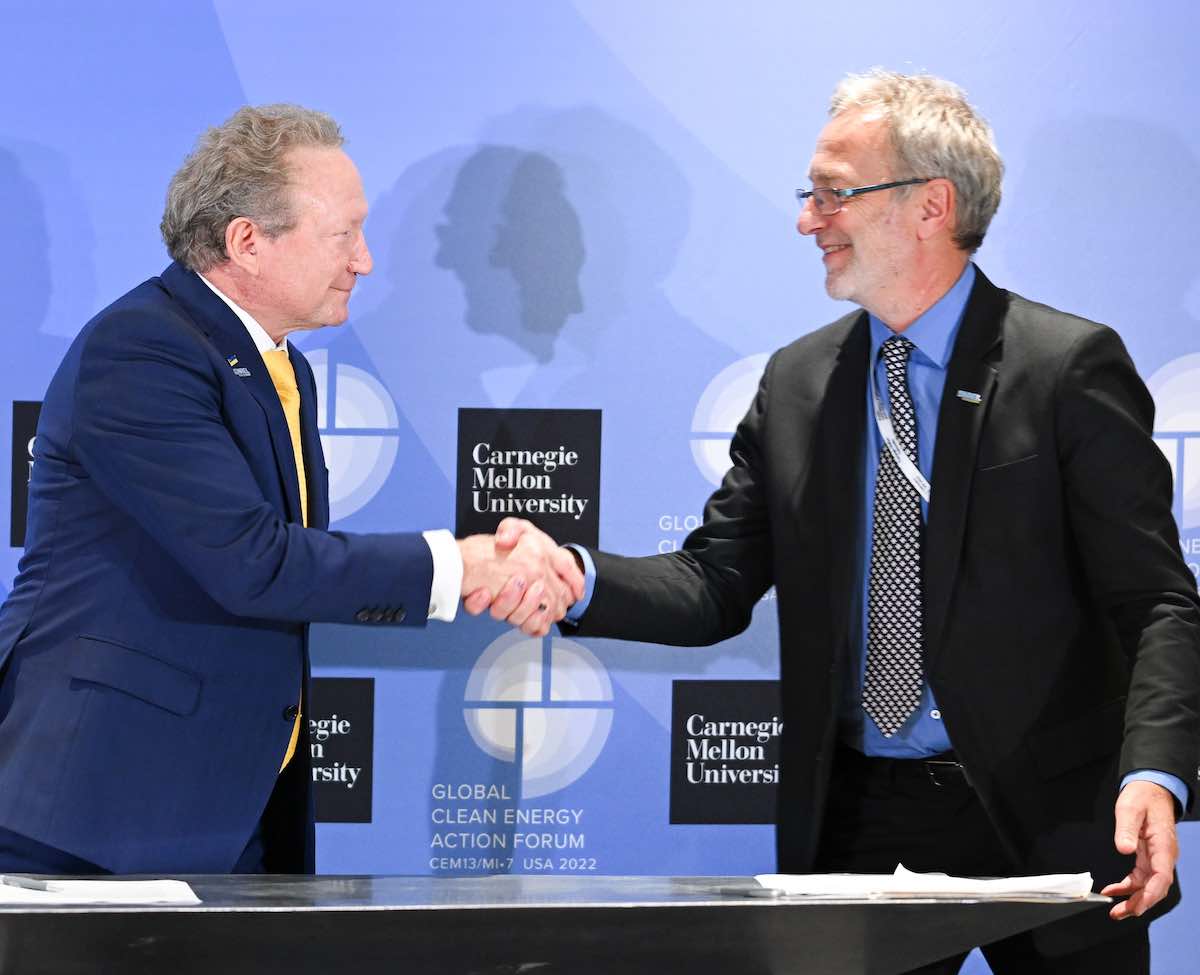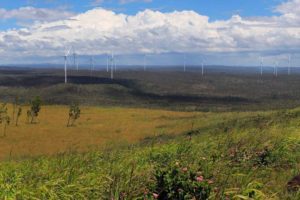Andrew Forrest’s Fortescue Future Industries has announced a partnership with the US Department of Energy’s National Renewable Energy Laboratory that will see it back NREL research projects to the tune of $80 million over up to 10 years.
“NREL’s dream is to have its green technology commercialised. Our dream is to commercialise their green technology,” said “Twiggy” Forrest on Thursday at a signing ceremony for the new collaboration, which will initially span three years.
A good chunk of the millions from FFI will no doubt back research to fast-track technology around green hydrogen production and transport, a major focus of FFI’s green global domination strategy, which also targets complete decarbonisation of the company’s own Scope 1 and 2 emissions by 2030.
On that goal, Forrest’s Fortescue Metals Group revealed this week it would spend a whopping $A9.2 billion – most of it in the next four years – including on the deployment of an additional 2-3GW of wind and solar generation and battery storage.
FFI has also set itself an even more ambitious target of delivering 15 million tonnes of green hydrogen a year by 2030, although the company is yet to fill in the details of how exactly that will be done.
“America is now the best place for green hydrogen investment”
Andy Vesey, Fortescue’s head of North America, says the company’s US arm is currently examining capability at national scale for solar, battery and electrolyser manufacturing in America – efforts it hopes to boost through “deep integration” into the US science and technology community.
“America is now the best place for green hydrogen investment,” Vesey said on Thursday. “This will create and save jobs for Americans and reduce emissions.”
NREL Laboratory director Martin Keller says his organisation is continually seeking partners that share its goal of bringing “lowest-emissions” energy technologies to market.
“We know that the swiftest pathways to achieve impact are by working with motivated partners such as FFI, with the resources and intent to drive global change,” he said on Thursday.
Last week, FFI announced the launch of its own US Technology Hub, based in Colorado, which will serve as a base to collaborate on research with the Colorado School of Mines, University of Colorado, Colorado State University, and other US research labs and universities.
FFI says the Hub will develop green hydrogen and green energy innovations and technology, with a focus on decarbonising hard-to-abate industries that can be commercialised fast – particularly since the successful passage of the US “The Inflation Reduction Act” (IRA).
Elsewhere in North America, FFI also recently signed a Memoranda of Understanding (MoU) with Miawpukek First Nation (MFN) in Newfoundland and Labrador, in Canada, to collaborate on a proposed hydrogen project on the island portion of the Canadian province.
FFI says Project Lynx, to be developed in and around the Stephenville, St. George’s and Channel-Port Aux Basques areas, could produce 700,000 to 900,000 tonnes of green ammonia annually and create up to 2000 jobs in the province.










